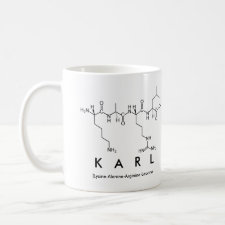
Authors: Boos KS, Fleischer CT
Article Title: Multidimensional on-line solid-phase extraction (SPE) using restricted access materials (RAM) in combination with molecular imprinted polymers (MIP).
Publication date: 2001
Journal: Fresenius Journal of Analytical Chemistry
Volume: 371
Issue: (1)
Page numbers: 16-20.
DOI: 10.1007/s002160100831
Abstract: A novel, multidimensional SPE sample-processing platform for complex fluids, which relies on the combination of small LC columns packed with restricted access materials (RAM) and molecular imprinted polymers (MIP) is described. It is called the Six-S ProcEdure (Six-SPE). Six-SPE involves a size- selective sample-separation step followed by a solvent-switch. Six-SPE efficiently removes interfering matrix components of complex aqueous samples and creates optimal conditions for selective recognition, i.e. binding of the imprinted target analyte(s). A SixSPE analysis cycle consists of four distinct steps: 1. separation of a given sample (e.g. plasma, urine, saliva, milk, etc.) by adsorptive extraction (e.g. reversed- phase partitioning) of low molecular weight components on to the stationary phase of a RAM column and simultaneous size- exclusion, i.e. quantitative disposal of macromolecular matrix constituents to waste; 2. desorption and transfer of the extract from the RAM column on to a series-connected MIP column using a pure organic mobile phase (e.g. acetonitrile) [solvent switch]; 3. molecular recognition, i.e. selective binding of the target analyte(s) by a tailor-made MIP column; and 4. desorption and transfer of the analyte fraction on to a series- connected separation (e.g. HPLC) and/or detection system (e.g. UV, FD, MS). As a first application we coupled the Six-SPE platform to a conventional HPLC system for on-line analysis of the analgesic drug Tramadol in human plasma using LiChrospher ADS RP-18 as a RAM precolumn for the fractionation step in the first and second chromatographic dimension and a Tramadol imprinted polymer for the molecular recognition step, i.e. third chromatographic dimension
Template and target information: tramadol



Join the Society for Molecular Imprinting

New items RSS feed
Sign-up for e-mail updates:
Choose between receiving an occasional newsletter or more frequent e-mail alerts.
Click here to go to the sign-up page.
Is your name elemental or peptidic? Enter your name and find out by clicking either of the buttons below!
Other products you may like:
 MIPdatabase
MIPdatabase









